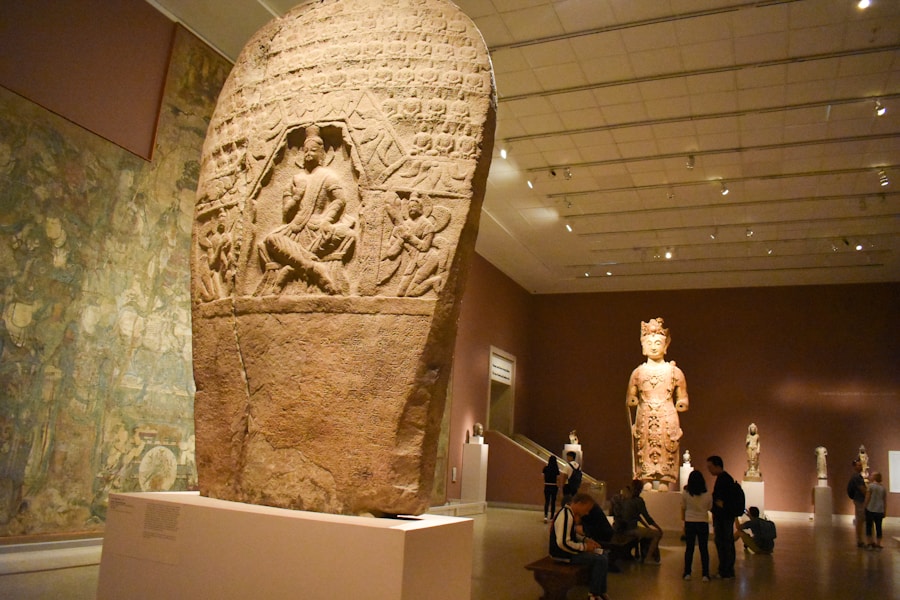Cultural heritage encompasses the traditions, customs, artifacts, and historical narratives that define a community or society. It serves as a bridge connecting past generations to the present, allowing individuals to understand their roots and identity. The preservation of cultural heritage is crucial not only for maintaining the diversity of human experience but also for fostering a sense of belonging and continuity within communities.
When cultural heritage is preserved, it provides a tangible link to history, enabling future generations to learn from the past and appreciate the richness of their cultural narratives. Moreover, preserving cultural heritage plays a vital role in promoting social cohesion and mutual respect among diverse groups. In an increasingly globalized world, where cultural homogenization threatens local identities, safeguarding unique cultural expressions becomes essential.
This preservation fosters intercultural dialogue and understanding, allowing different communities to share their stories and learn from one another. By valuing and protecting cultural heritage, societies can cultivate an environment where diversity is celebrated, leading to greater harmony and collaboration among various cultural groups.
Key Takeaways
- Preserving cultural heritage is important for maintaining a sense of identity and history within a society.
- Museums play a crucial role in preserving cultural heritage by collecting, conserving, and displaying artifacts and artworks.
- Challenges in preserving cultural heritage include funding constraints, natural disasters, and theft or vandalism of artifacts.
- Strategies for preserving cultural heritage in museums include digitization, conservation efforts, and community engagement.
- Preserving cultural heritage in museums can have a positive impact on society by promoting understanding, tolerance, and appreciation of diverse cultures.
- The future of preserving cultural heritage through museums will involve leveraging technology, increasing collaboration, and adapting to changing societal needs and values.
Role of Museums in Preserving Cultural Heritage
Museums serve as custodians of cultural heritage, playing a pivotal role in its preservation and interpretation. They collect, conserve, and exhibit artifacts that represent the history and traditions of various cultures. Through careful curation and scholarly research, museums provide context to these objects, helping visitors understand their significance within a broader historical narrative.
This educational function is essential for fostering appreciation and respect for diverse cultures, as museums often serve as the first point of contact for individuals seeking to learn about different heritages. In addition to their educational role, museums actively engage in the preservation of cultural heritage through conservation efforts. This involves not only the physical preservation of artifacts but also the documentation of intangible cultural heritage, such as oral traditions, rituals, and performances.
By collaborating with local communities, museums can ensure that these practices are recorded and maintained for future generations. This partnership not only enriches the museum’s collections but also empowers communities to take an active role in preserving their own cultural narratives.
Challenges in Preserving Cultural Heritage

Despite the critical importance of preserving cultural heritage, numerous challenges hinder these efforts. One significant issue is the impact of globalization, which often leads to the commodification of culture. As cultures become commercialized, there is a risk that traditional practices may be diluted or altered to cater to tourist expectations.
This can result in a loss of authenticity and meaning, as cultural expressions are transformed into mere products for consumption rather than genuine representations of a community’s identity. Additionally, political instability and conflict pose severe threats to cultural heritage preservation. In regions experiencing war or civil unrest, historical sites and artifacts are often targets for destruction or looting.
The devastation witnessed in places like Syria and Iraq highlights the urgent need for international cooperation in protecting cultural heritage during times of crisis. Furthermore, inadequate funding and resources for museums can limit their ability to effectively preserve and showcase cultural heritage. Many institutions struggle with budget constraints that hinder their conservation efforts and educational programming.
Strategies for Preserving Cultural Heritage in Museums
To address the challenges faced in preserving cultural heritage, museums can adopt several strategies that enhance their effectiveness as custodians of culture. One approach is to prioritize community engagement by involving local populations in the preservation process.
By fostering a sense of ownership over their cultural heritage, communities are more likely to invest in its preservation. Another effective strategy is the integration of technology in preservation efforts. Digital archiving allows museums to create virtual collections that can be accessed by a global audience, thereby increasing awareness and appreciation for diverse cultures.
Technologies such as 3D scanning and virtual reality can also be employed to create immersive experiences that bring historical artifacts to life. These innovations not only enhance visitor engagement but also provide alternative means of preserving fragile artifacts that may be at risk of deterioration.
Impact of Preserving Cultural Heritage on Society
The preservation of cultural heritage has far-reaching implications for society as a whole. It contributes to the development of a collective identity, fostering pride among community members while promoting understanding among different groups. When individuals engage with their cultural heritage, they are more likely to develop a sense of responsibility toward its preservation.
This sense of stewardship can lead to increased participation in cultural activities and initiatives aimed at safeguarding traditions. Furthermore, preserving cultural heritage can have significant economic benefits.
By investing in the preservation of cultural heritage, communities can attract visitors who contribute to local economies while simultaneously raising awareness about the importance of safeguarding these treasures. This symbiotic relationship between cultural heritage preservation and economic development underscores the need for sustainable practices that benefit both communities and visitors.
Future of Preserving Cultural Heritage Through Museums

Looking ahead, the future of preserving cultural heritage through museums will likely be shaped by ongoing advancements in technology and evolving societal values. As digital tools become increasingly sophisticated, museums will have greater opportunities to engage audiences in innovative ways. Virtual reality experiences could allow visitors to explore historical sites that are otherwise inaccessible due to geographical or political barriers.
Additionally, augmented reality applications may enhance on-site experiences by providing contextual information about artifacts in real time. Moreover, as societal awareness regarding issues such as climate change grows, museums will need to adapt their practices to address environmental sustainability in preservation efforts. This may involve implementing eco-friendly conservation techniques or developing programs that educate visitors about the impact of climate change on cultural heritage sites around the world.
By embracing these challenges and opportunities, museums can continue to play a vital role in preserving cultural heritage for future generations while fostering a deeper understanding of our shared human experience.
Preserving Cultural Heritage Through Museums is crucial in maintaining the history and traditions of societies around the world. In a related article, Exploring Vedanta Philosophy: Understanding the Nature of Reality and Liberation, delves into the philosophical aspects of culture and how it shapes our understanding of the world. Just as museums showcase artifacts and artworks that reflect a society’s values and beliefs, Vedanta philosophy offers insights into the nature of reality and the pursuit of liberation. Both articles highlight the importance of preserving and understanding cultural heritage in order to appreciate the diversity and richness of human experience.
FAQs
What is the importance of preserving cultural heritage through museums?
Preserving cultural heritage through museums is important because it helps to safeguard and promote the understanding of a society’s history, traditions, and values. Museums serve as repositories for artifacts, artworks, and documents that are significant to a culture’s identity.
How do museums contribute to the preservation of cultural heritage?
Museums contribute to the preservation of cultural heritage by collecting, conserving, researching, and exhibiting objects and materials that are of historical, artistic, or cultural significance. They also provide educational programs and outreach activities to engage the public in learning about and appreciating cultural heritage.
What role do museums play in educating the public about cultural heritage?
Museums play a crucial role in educating the public about cultural heritage by presenting exhibitions, organizing events, and offering educational programs that provide insights into the history, traditions, and customs of different cultures. They also facilitate dialogue and understanding between different communities.
How do museums ensure the long-term preservation of cultural artifacts?
Museums ensure the long-term preservation of cultural artifacts through proper conservation and storage practices, as well as by conducting research to understand the materials and techniques used in creating the artifacts. They also adhere to professional standards and guidelines for the care and preservation of cultural heritage.
What are the challenges in preserving cultural heritage through museums?
Challenges in preserving cultural heritage through museums include funding constraints, the need for specialized expertise in conservation and curation, ethical considerations related to the ownership and repatriation of cultural artifacts, and the impact of environmental factors on the preservation of objects.























+ There are no comments
Add yours